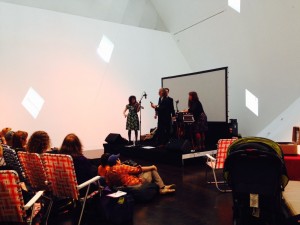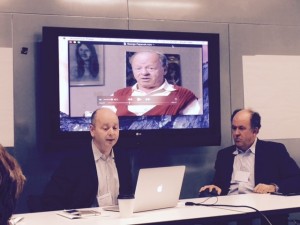Recently, a group of 15 different organizations (15!) released a case study –Finding New Paths for Teen Engagement and Learning: A Funder Collaborative Leads the Way – detailing the two-years they’ve spent working together, learning about and investing in Jewish teen education and engagement initiatives. There are a litany of insights and interesting lessons to pull from the study, which we believe are beneficial to organizations well beyond the Jewish teen education and engagement arena (and even beyond the Jewish education arena). In fact, funders in all philanthropic sectors are increasingly pooling or coordinating funding for greater impact, or to address particularly challenging social and environmental problems. Because of this trend in collaborative efforts, we – one of us the evaluator who wrote the case study, and the other a member of the Jewish Teen Education and Engagement Funder Collaborative – want to highlight key items that have been integral to the development and initial successes of this funder collaborative.
First, let’s start from the beginning. This funder collaborative – different from many others – formed early connections around research, specifically a report, Effective Strategies for Educating and Engaging Jewish Teens. There was a mutual desire of all involved to make sense of the research learnings and to determine strategic ways to move forward, fund, and implement the best practices identified in teen education and engagement.
While other collaboratives often come together on a wave of dissatisfaction or frustration, or when one funder has a single idea and wants to build support for that alone, in this instance the research created a shared learning environment. Open discussion and creative ideas were, and are, encouraged. As a result, the various local funders “around the table” have access to many voices all focused on teen education and engagement – a rarity and a real value-added for these individuals given that their organizations focus on many areas of Jewish engagement. Now, the Collaborative is their unique space for delving deeply into this specific area.
Second, the Collaborative benefited from members’ shared beliefs, knowledge of the issue, and particularly shared experiences. The first two points admittedly are not entirely unique. Many collaboratives might bring individuals and organizations together around an issue about which all care deeply and are knowledgeable – be it homelessness, the environment, hunger, or other societal challenges. But this collaborative brought talented, passionate people together who live their work and have common experiences – Jewish life cycle events, trips to Israel, and other formidable moments – that are unique to this group. These common experiences, the close linkage between work and personal life, and the now multiple years of working together for a common goal have led to very genuine, strong relationships between Collaborative members. There is a true sense of a “team” because everyone wants to be a part of the Collaborative.
With this relationship-based environment, the Collaborative is positioned to do much more than just try to fix the problem by merely aggregating funds or aligning grants. Instead, Collaborative members aggressively tackle large challenges and problems where solutions have been frustratingly elusive. Participants say that learning and problem-solving together has been one of the reasons they stay in the group, participate actively, and take on the local initiative work. They appreciate that the Collaborative is a space beyond their home communities. It offers different voices, and similar to traditional chavruta study, members interact with each other in ways that push their thinking and creativity.
Third, the dynamic of national-local partnerships has many benefits. From a funding standpoint, the challenge that the Jim Joseph Foundation offered has been a catalyst for change in the five local communities that already have implemented initiatives. Beyond the funding, collaborative members from local communities take conversations that start within the Collaborative framework – i.e. measurement of Jewish growth outcomes, developing sustainable programs, and the like – and bring them back to colleagues working in areas outside of the specific Jewish teen education arena. In other words, local foundations and federations who commit staff time to the Collaborative are seeing benefits across their organizations.
A final key ingredient for the Collaborative’s success was clear-eyed and generous leadership. As discussed previously, the Jim Joseph Foundation committed money and time of Foundation staff, and did it looking to create something positive for all involved. The Foundation had clarity about its own objectives and hoped-for outcomes, but also a realistic appreciation that the Collaborative would have to both challenge and meet the individual needs of the funders in the group.
Now entering its third formal year, the Collaborative has an impressive number of accomplishments, which not all funder collaboratives can claim within such a short time: active participation by a consistent group; funding commitments for new initiatives in more than half of the participating communities; common measures of success adopted by all; and a cross-community evaluation that will aggregate data across multiple initiatives.
Collaborative members continue to address the common challenges that all communities face, regardless of unique characteristics or size, regarding Jewish teen education and engagement: how to increase it, how to sustain it when you get it, how to assess whether teens are gaining any lasting benefits. There is an excitement around being a part of something that is new, challenging, and, at least initially, effective all at the same time. And while we understand that no two funder collaboratives are alike, we believe that these insights can help other organizations who strive for deeper collaborations that simultaneously increase learning and strategic grantmaking.
Ellen Irie is President and CEO of Informing Change. Reuben Posner is Director of Youth Engagement at Combined Jewish Philanthropies of Greater Boston. Read the full case study here about the Jewish Teen Education and Engagement Funder Collaborative, comprised of four national funders and funder representatives from ten communities.
 cognition of its success infusing Israel into a greater part of camp culture and overall experience, Camp Pembroke in Pembroke, was awarded the inaugural “Goodman Prize for Excellence in Israel Education at Camp” by the iCenter for Israel Education, Foundation for Jewish Camp (FJC), and the Lillian and Larry Goodman Foundations.
cognition of its success infusing Israel into a greater part of camp culture and overall experience, Camp Pembroke in Pembroke, was awarded the inaugural “Goodman Prize for Excellence in Israel Education at Camp” by the iCenter for Israel Education, Foundation for Jewish Camp (FJC), and the Lillian and Larry Goodman Foundations.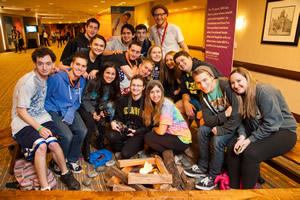
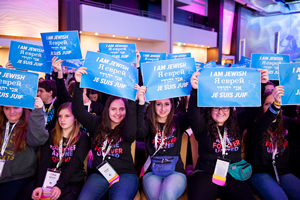
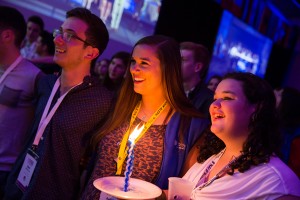
 A funder collaborative set up to invest in community-based Jewish teen education initiatives has been “strikingly successful” in its first two years, with all participants reporting a high level of satisfaction, a case study commissioned by the
A funder collaborative set up to invest in community-based Jewish teen education initiatives has been “strikingly successful” in its first two years, with all participants reporting a high level of satisfaction, a case study commissioned by the 